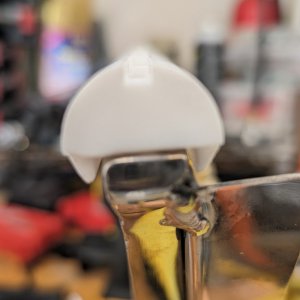I'm quoting Dri-Eaz on the performance capabilities of the 1200 for starters.
#2, for every job we dry with TES we dry 2 with conventional equipment. We have enough conventional equipment to run a dozen jobs at any one time.
#3, In some situations it is recommended to use a HT dehu with TES.
#4, You started this by making not only false, but absurd statements about the limitations of the TES system. I am wondering if you have ever dried a structure with TES, and if so, how many? Also, have you been to a heat drying shool? You have never backed up any statement that you have made on any drying scenario with factual statements. So far everything you have said has been speculative and easily disproven.
#5, I don't need to have credibility with you nor do I want it. Apparently, credibility is imprtant to you, so if you need that security blanket I would suggest providing scientific data to support you claims. I refrained from attacking you personally because it has been up to now your apparrent lack of knowledge and profesionalism that I dissagreed with, not the quality of person you are. Your close minded approach to drying methods and science is obvious. Now unfortunatley your ignorance of drying has pushed your frustration to the point where you can no longer make a stand base on the science of drying, therefore you have began personal attacks.
#6, You obviously have not paid that much attention to all of my posts because I speak highly and often about conventional drying methods.
So, Let me apologize and start on a clean slate and give some genuine advice about your current drying job.
I would advise on your next visit to:
1) Bag the clothes and take to cleaners, or box and move to another area depending on condition and moisture content. The insurance will most probably pay for the cleaning.
2) Take some windex and some towells and clean up your dehu so it looks better. (just because your customers are slobs, you don't have to be)
3)Take complete readings of the job and map the moisture. Make sure to take deep readings, many times the drywall wil be dry but there will be moisture condensed under the sole plates.
4) Take all of your temp and humidity readings and determine your vapor presures, this will verify your evaporation rates incase you need it down the road for payment or litigation.
5) Burp the building, your air is dry there. If possible leave the windows open today if someone will be home or security can be arranged.
6) Replace the 1200 with a LGR for the last day or 2 of drying A 1200 can only go down to appx 55 GPP and an LGR can go down to 32 GPP. That is a signifigant differance in vapor pressure and that is what is needed to remove the deep down moisture.




 as for the readings, I just started the job today, the only readings I would have would be outside numbers, do they really mean anything at this point, I am not going to get complicated on a 1/4 room job that has less than 80 sq feet of damaged area, I will just show back up on monday and it will be dry, not rocket science here or anything. of course readings will be taken again
as for the readings, I just started the job today, the only readings I would have would be outside numbers, do they really mean anything at this point, I am not going to get complicated on a 1/4 room job that has less than 80 sq feet of damaged area, I will just show back up on monday and it will be dry, not rocket science here or anything. of course readings will be taken again